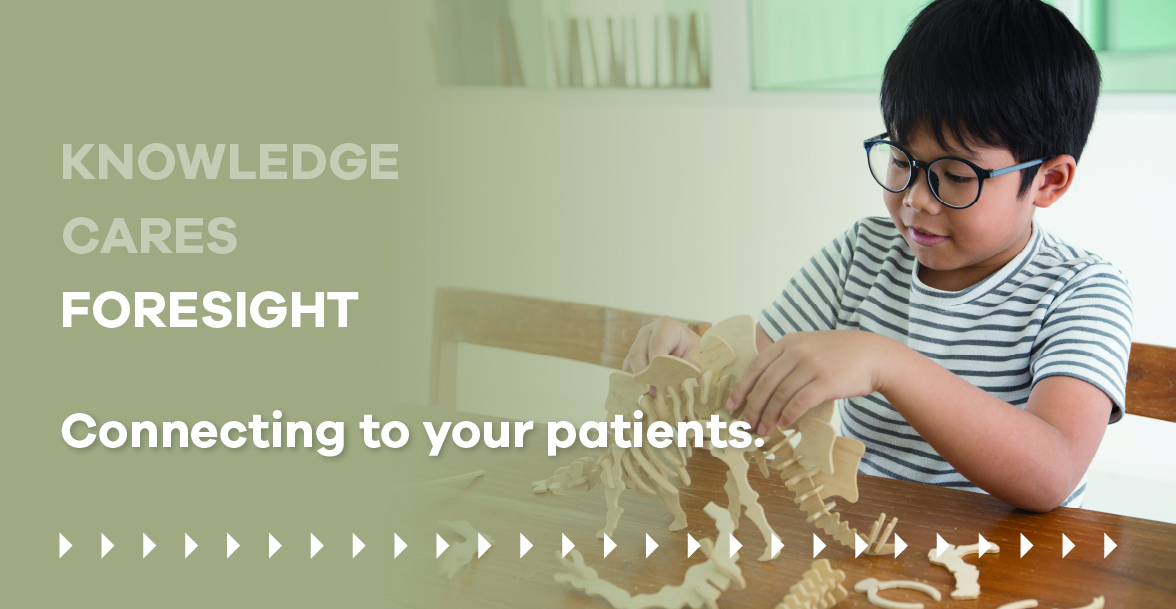School went through many changes in 2020, and some of those changes have remained in various forms. The hybrid learning model, where some students go to school in person and others stay at home, could be one of the trends that stick around for a while.
As you’re preparing for the new back-to-school season (whatever that may look like this year), make sure you’re ready to give your team and your patients what they need to be successful. Here’s how to prepare your eye care practice for back-to-school season and make sure parents are focusing on their children’s eye health.
Talk about the impact of uncorrected vision disorders on school performance
Start educating patients about how uncorrected vision disorders can make learning more difficult. Due to so much information being presented visually to children, any problem that interferes with getting this visual information efficiently to the brain can make learning more difficult.
One example of a common vision disorder that can cause learning problems is hyperopia. Also called farsightedness, uncorrected hyperopia makes it more difficult for children to keep their eyes comfortably focused on reading material. This can result in eye fatigue, intermittent blurry vision, and even poor reading comprehension. Another potential vision problem that makes reading more difficult is something called convergence insufficiency. This disorder makes it difficult for a child to keep his eyes accurately aligned on words when reading.
School vision screenings are useful for detecting certain vision problems like nearsightedness (the inability to see clearly across the room) and color blindness. But these screenings are often performed by people who are not eye care specialists trained to observe specific vision issues that can arise with children. In addition, the test is very limited in scope and often misses vision problems that can affect learning.
Many times, teachers have been the first to notice when students are dealing with vision problems. The problem is, teachers are already under a lot of pressure in their profession. Issues will naturally go unnoticed, probably long enough to where it could create learning trouble and delays.
As a local ECP, you have the knowledge and foresight to step in right here. It’s your opportunity to help these students see so they can learn and free these teachers up so they can teach.
Let your patients know you’re there to fill that role for them.
Help them understand that digital eye strain is a real issue
Over the years (and especially since the pandemic), there has been a dramatic increase in screen time — for both education and entertainment. Digital eye strain (DES), which results from too much screen time, is a real thing that not everyone fully understands. Working with ECPs so often, we know the signs and that one of the best solutions to DES is Sync III lenses.
Remind your patients, especially those with children who are going back to school soon, about the importance of vision care as a way to prevent DES. Also, inform them that their vision plan makes premium products that help treat DES, like Sync III, more affordable. They and their children deserve to protect the future of their eye health, and once they make their appointment, make sure to treat all of their DES symptoms, not just some.
Read more about DES in our white paper, Our eyes in a digital era. It examines both causes and possible solutions to what has become a widespread phenomenon.
Emphasize the importance of sunwear for children
Children need UV eye protection just as much as adults. Too much sun exposure increases the risk for vision problems and conditions later in life, such as cataracts and macular degeneration. This risk increases with exposure to sunlight over a lifetime.
The best way to protect a person’s eyes from UV radiation damage and vision loss later in life is to begin dispensing high-quality sunglasses for children at an early age, whether they need a prescription or not. Plus, a nice pair of sunglasses would be a great back-to-school gift for your patients’ children.
Read our other blog post, The importance of sunglasses for children, where we cover more information on the science behind sun exposure for children and the features and functionality for patients to consider in sunglasses.
Coppertone® Lenses offer premium eye protection, visual performance, and comfort for your entire family. It is important to protect everyone’s eyes, no matter the age. It is estimated that 23% of lifetime exposure to UV occurs by age 18, so it’s important that parents teach children how to enjoy fun in the sun safely.
And if you need a little help talking to your patients about prescription sunwear, we created an infographic to help you start the conversation. Download that infographic here.
Equip your eye care practice team with resources that will help them support patients
Your team will also need to prepare for the new back-to-school season. Ensure they have all the resources and support they need to set your patients and your practice up for success. We’ve put together five highly informative white papers that can be used in and outside your practice to get ready for this back-to-school season.


